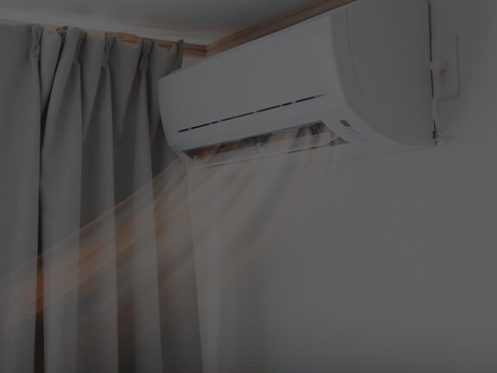Mini-split systems have gained vast popularity recently. Also known as ductless air conditioning systems, the units help maintain the required internal temperature while eliminating traditional ductwork disadvantages. They help minimize energy loss associated with inefficient ductwork. Before installing a ductless system in your home, you need to know how they work. Here is everything you need to know about mini-split units.
1. What Is a Mini-split System?
It’s a type of cooling and heating unit that doesn’t require ductwork. You will need to install an indoor system for all rooms you want to heat or cool instead of using ductwork to push the conditioned air. Rather than focusing on the entire house, the ductless system heats or cools specific spaces within a home. Still, you can use the mini-split system to heat the whole house by connecting multiple indoor units to a single outdoor unit.
2. How Do Ductless Systems Work?
The mini-split system works like a regular air conditioning system by compressing and expanding a refrigerant to pull away heat and moisture from the air. However, there are noticeable differences between the mini-split systems and other units. Ductless systems have three main components.
The evaporator, or indoor unit, sits near the wall of the room. It is attached to a conduit, which is a long thin cable that connects the indoor unit to the outdoor unit. A conduit’s primary role is to channel electricity to both the indoor and outdoor units. It also creates a pathway where moisture and heat exit towards the condenser. The condenser is the mini-split system’s outdoor unit that dumps all the heat pulled out from your indoor air.
The indoor unit sucks in warm air from the house and passes it through the cold evaporator coils. During this step, the refrigerant absorbs the heat, and then, cool air gets ejected back into the house. The absorbed heat and moisture pass through the conduit to the condenser, which releases it outside.
When heating the house, the mini-splits takes advantage of the fact that heat moves from warm to cool areas. The unit, therefore, uses an extremely cold refrigerant to absorb heat from the outside environment. The system releases the warm air through the indoor unit’s connections, which distributes the warm air into specific rooms.
3. Mini-Split System Options
The ductless system has various configurations that allow homeowners to customize the system to meet their unique needs. A mini-split contains a heating pump for additional heating capabilities. This component helps distribute heat from one place to another. The system also has a wall unit that lets you choose specific areas within your house where you want to cool or heat.
Further, the ceiling cassette is an excellent option in places with limited space. It enables you to install the unit in the ceiling, and it distributes conditioned air from a grille. You can also choose to install a single or multi-zone unit. You can only heat or cool one room with the single zone system. On the other hand, the multi-zone mini-split allows you to control the temperature in different rooms.
4. Common Mini-Split Systems Applications
Ductless systems work well in different situations. For instance, if your house doesn’t have pre-existing ductwork, installing an HVAC unit could be very expensive. You will need to cut through your walls or floors to install new ducts. However, the ductless technology eliminates such expenses since it allows direct air circulation through the indoor unit without using ductwork.
Additionally, if you have rooms located at the end of a duct, such areas could end up being cooler or warmer than other rooms. A ductless system will help maintain a constant temperature in such spaces.
If you live in a big house with a smaller or inefficient HVAC unit, you can use the mini-split system for supplement cooling or heating. It’s also a good idea if you want to downsize without moving. You can achieve this by only heating the occupied rooms to avoid energy wastage.
The ductless system also benefits people sharing the same house but with different temperature needs. For instance, the elderly and newborn babies will require more heat than healthy adults and teenagers. Besides, sometimes, people just feel comfortable at different temperatures. With a ductless system, people can enjoy varying temperatures in different rooms without affecting others.
Mini-splits will also benefit people who are making additions to their homes, like refinishing a basement, adding a sunroom, or furnishing the attic. Instead of overstretching your HVAC unit, you can choose a ductless system suitable for your added space.
5. Benefits of Ductless Units
One main benefit of the mini-split units over the other air conditioning systems is the ease of installation. Depending on the size of the unit, the installation can take a day or less. Even the multi-zoned system only requires small holes, so you won’t have to rebuild or replaster walls.
The ductless unit also eliminates the problem of energy loss through the ducts, which reduces energy expenditure. Modern mini-splits come with washable or replaceable filters that help prevent contaminants’ entry into your house, improving indoor air quality. The ductless units also offer great flexibility. You can install them in more places than the regular systems because of their smaller size.
Mini-splits operate quietly, and they have various customization options and a longer lifespan. Most ductless systems come with a remote control that helps you easily operate on and off commands, alter fan speed or change the operating modes.
The ductless systems also offer multiple operation modes. They contain a dehumidifying function that helps lower moisture levels in too humid regions. They may also include a fan-only mode if you want to circulate air without using the cooling option. Additionally, a mini-split has a sleep mode, which regulates the air temperature as you rest.
Bottom Line
The mini-split system has a lot to offer those looking for a more efficient cooling and heating alternative. Although ductless units aren’t applicable in all situations, they are ideal for most people.
To get the most out of your mini-split system, you need to choose the right size. It involves calculating the square footage of the area you want to heat or cool and matching it with the right BTUs. Note that an oversized unit will result in energy wasted and can also cause humidity accumulation in the house. On the other hand, a small-sized unit won’t efficiently heat or cool your house. To avoid such issues, it’s a good idea to consult a professional. A qualified technician will help assess your heating and cooling needs, the capacity needed and recommend the best unit that suits your needs.
If you need professional help, you can always reach out to We Care Plumbing, Heating, & Air. We can install new ductless units and also offer professional maintenance on your existing ones. Our company also offers other services like air conditioning and furnace installations, repair, and maintenance. You can depend on us for plumbing services if you reside in Murrieta, CA, and the surrounding areas. Call our representatives today to book an appointment.
Author Bio: Rusty Cochran
 Rusty Cochran is the President of We Care Plumbing, Heating and Air Conditioning. We Care began humbly, operating in his family’s living room. Under Rusty’s strong leadership, We Care has grown from 2 employees to over 200 employees. We Care Plumbing, Heating and Air has gained recognition across the HVAC industry, receiving numerous awards and certifications, including being named the ACCA Contractor of the Year, The Map Presidential Award several times, Angie’s List Super Service Award, NATE certification, and multiple Dave Lennox Awards. LinkedIn Profile
Rusty Cochran is the President of We Care Plumbing, Heating and Air Conditioning. We Care began humbly, operating in his family’s living room. Under Rusty’s strong leadership, We Care has grown from 2 employees to over 200 employees. We Care Plumbing, Heating and Air has gained recognition across the HVAC industry, receiving numerous awards and certifications, including being named the ACCA Contractor of the Year, The Map Presidential Award several times, Angie’s List Super Service Award, NATE certification, and multiple Dave Lennox Awards. LinkedIn Profile







